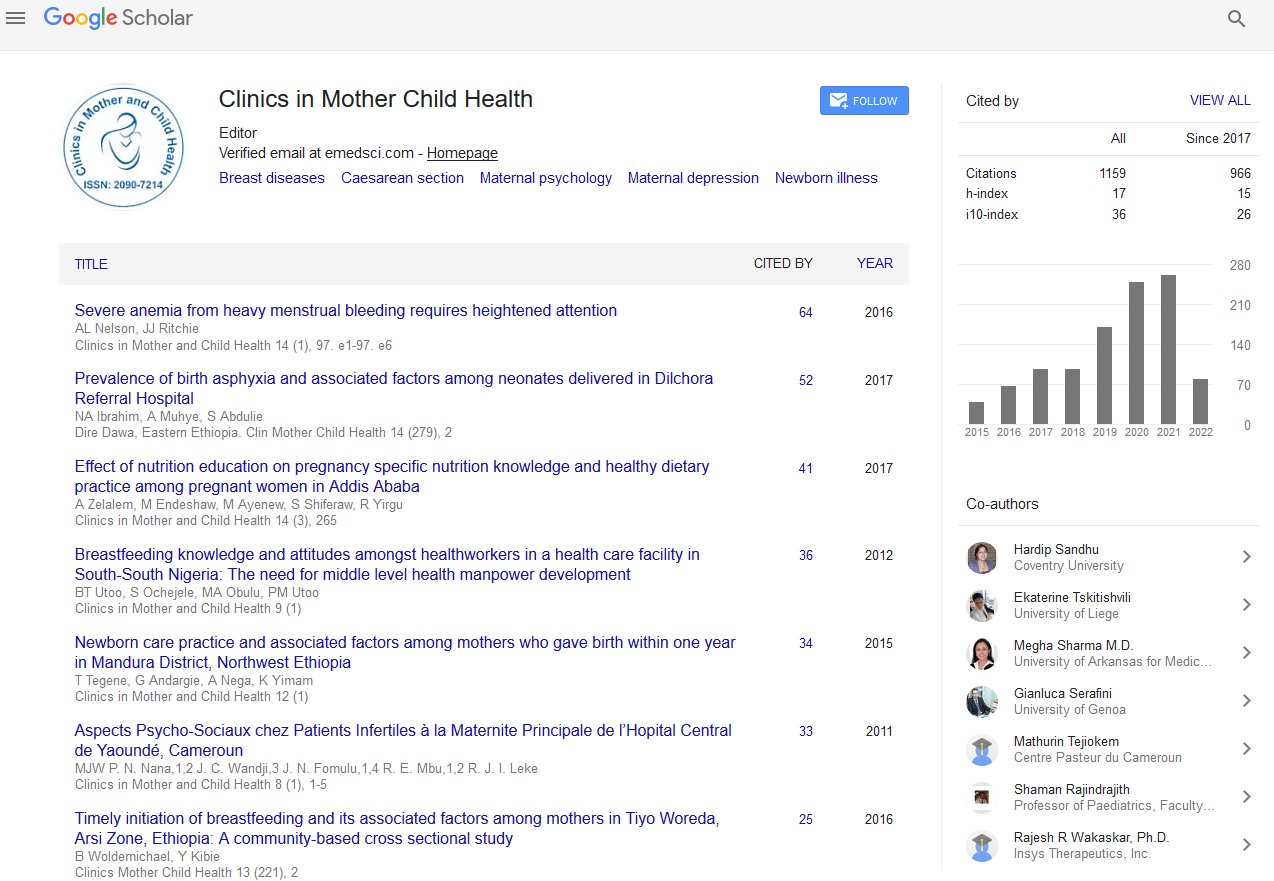Indexed In
- Genamics JournalSeek
- RefSeek
- Hamdard University
- EBSCO A-Z
- Publons
- Geneva Foundation for Medical Education and Research
- Euro Pub
- Google Scholar
Useful Links
Share This Page
Journal Flyer

Open Access Journals
- Agri and Aquaculture
- Biochemistry
- Bioinformatics & Systems Biology
- Business & Management
- Chemistry
- Clinical Sciences
- Engineering
- Food & Nutrition
- General Science
- Genetics & Molecular Biology
- Immunology & Microbiology
- Medical Sciences
- Neuroscience & Psychology
- Nursing & Health Care
- Pharmaceutical Sciences
Abstract
Interest of Prevention of Immediate Postpartum Hemorrhage with Misoprostol during Cesarean Section
Vodouhe MV, Bagnan Tonato JA, Hounkpatin B, Djossa SA, Obossou AAA, Sidi Rachidi I, Hounkponou AF, Salifou K, Lokossou A and Perrin RX
Objective: The purpose of this study was to compare the efficacy of sublingual misoprostol to oxytocin for the prevention of Immediate Postpartum Hemorrhage (IPPH) during caesarian section in the Borgou Regional University Teaching Hospital (CHUDB).
Methods: It was a prospective randomized controlled clinical trial conducted over a period of 6 months from January 26 to July 26, 2015, on 230 female patients meeting inclusion criteria: cesarean section on term singleton pregnancy, under spinal anesthesia, without any bleeding. The patients were selected at random and divided into two groups: the first group had received 600 micrograms (μg) of misoprostol by sublingual route during umbilical cord clamping; the second one was administered 20 UI of oxytocin through intravenous route. The primary endpoint was drop in hematocrit. The secondary endpoints were drop in hemoglobin level, perioperative blood loss and postoperative complications.
Findings: The socio-demographic and obstetrical characteristics of both groups’ patients were comparable. Average drop in hematocrit was identical: 0.05 ± 0.04 in both groups (p=0.573). The same applies to mean hemoglobin level: 1.7 ± 1.2 g/dl (p=0.886). As well, no significant difference was noted in average blood loss between the misoprostol group and the oxytocin group, respectively 281.8 ± 124.4 ml and 282.2 ± 120.8 ml (p=0.271). The incidence of side effects such as fevers and chills was significantly higher in the misoprostol group, respectively (79.1% vs. 9.6% and 79.1% vs. 0.0% p<0.001). However, those side effects were tolerable.
Conclusion: 600 μg of misoprostol dose by sublingual route is also as effective as oxytocin in the prevention of postpartum hemorrhage without significant side effects.


